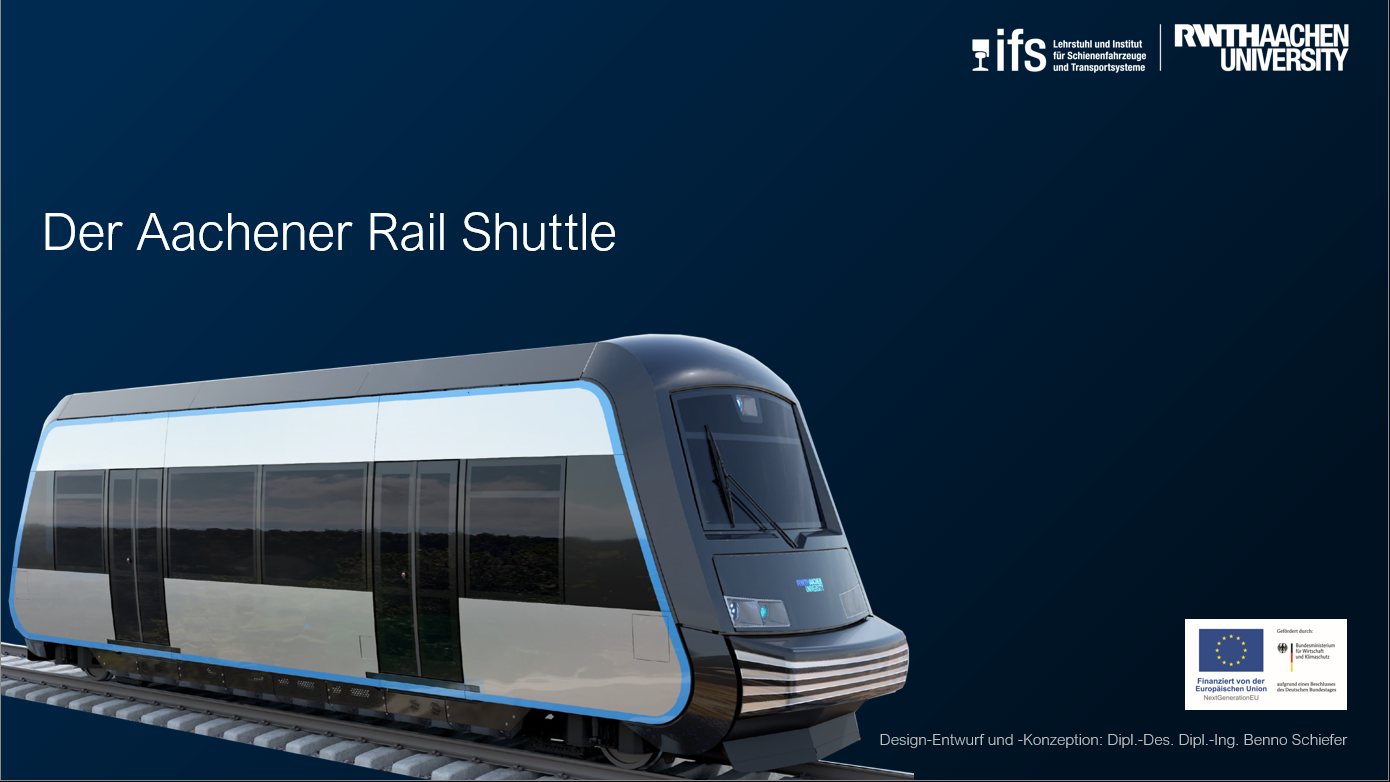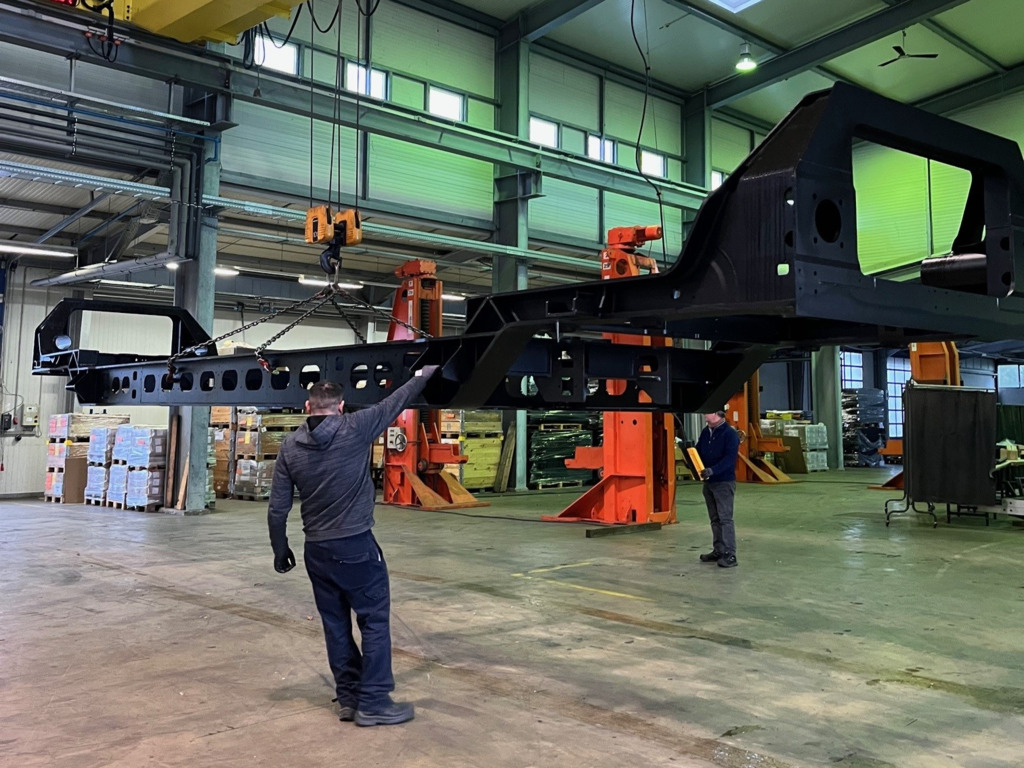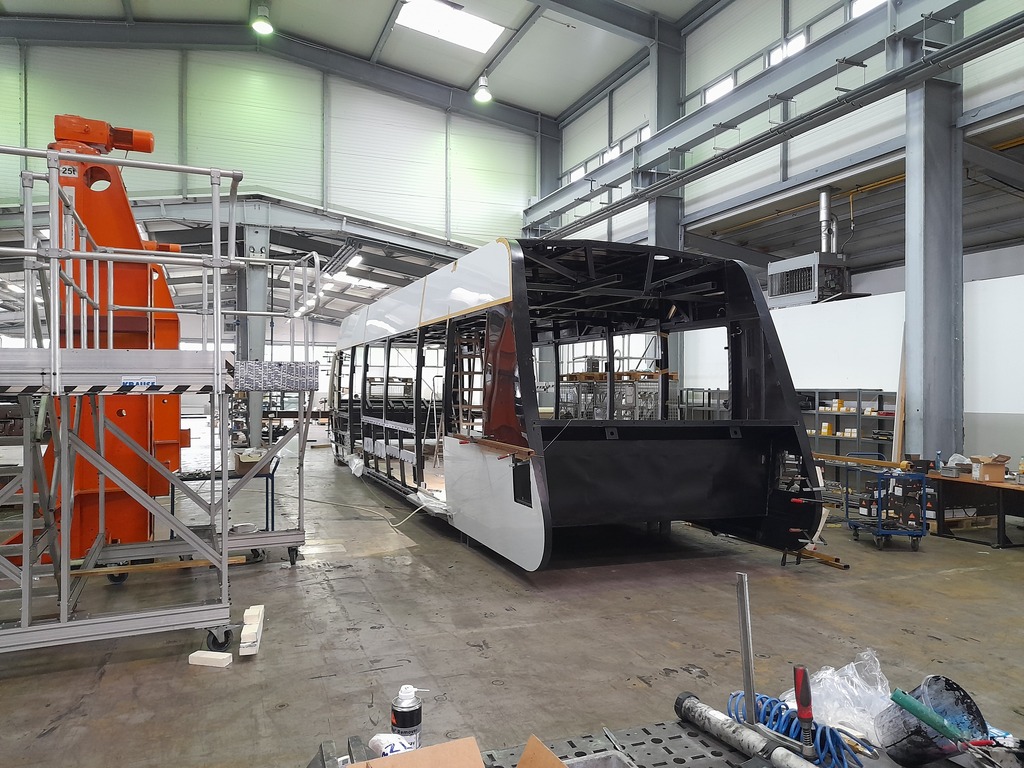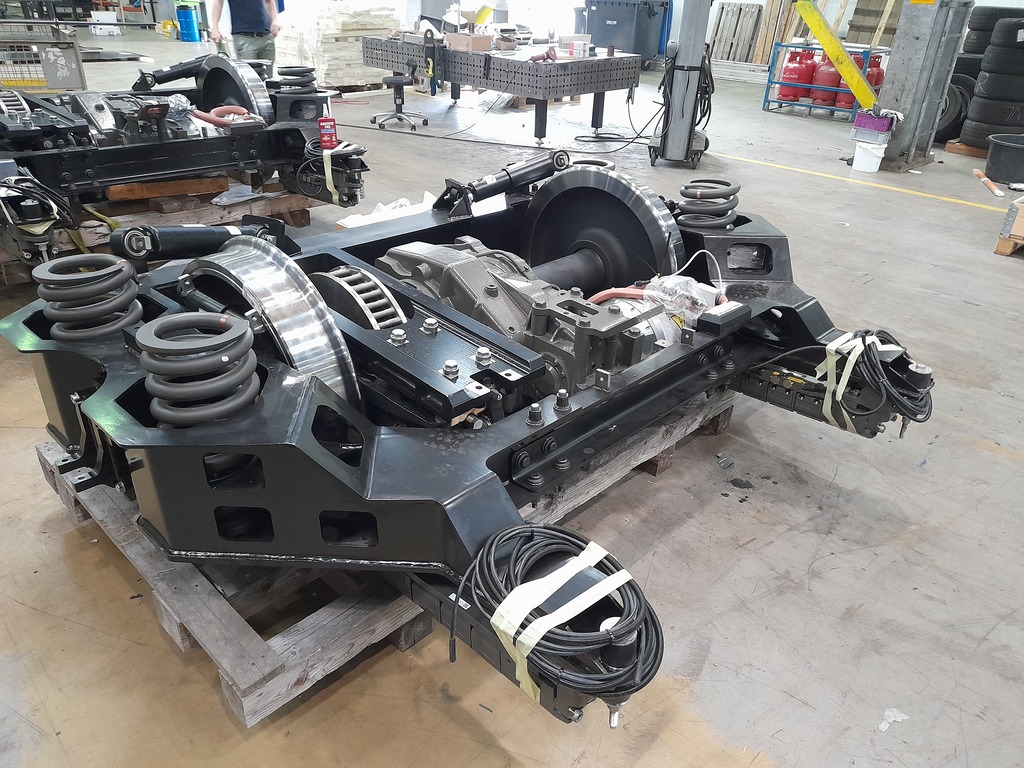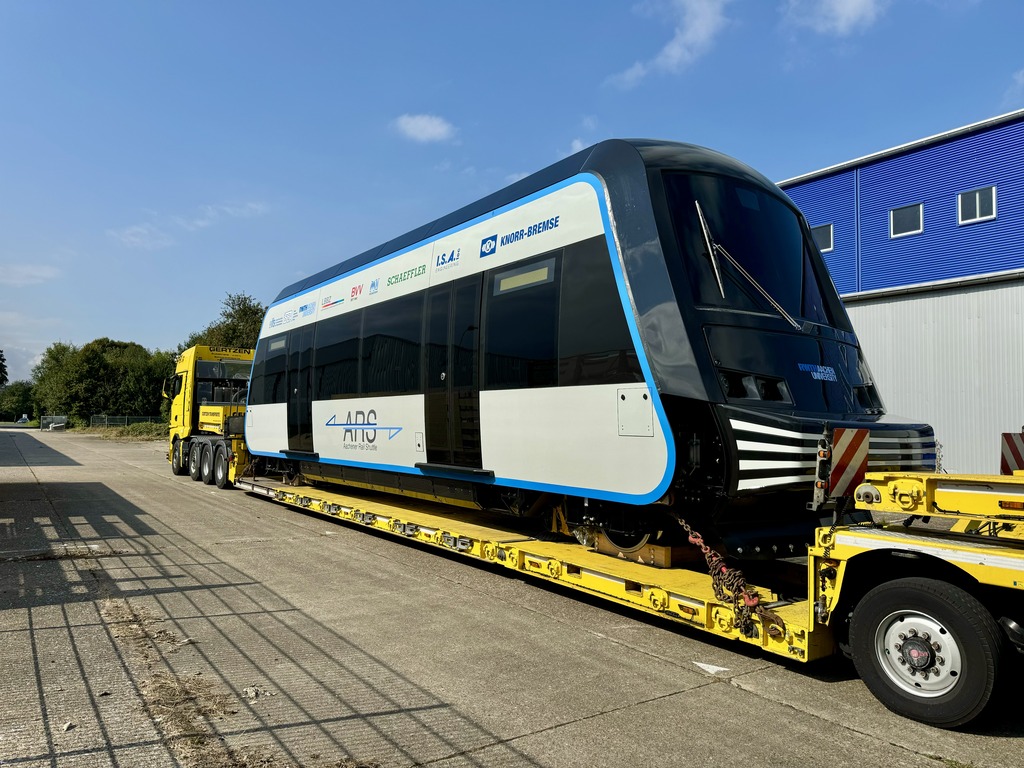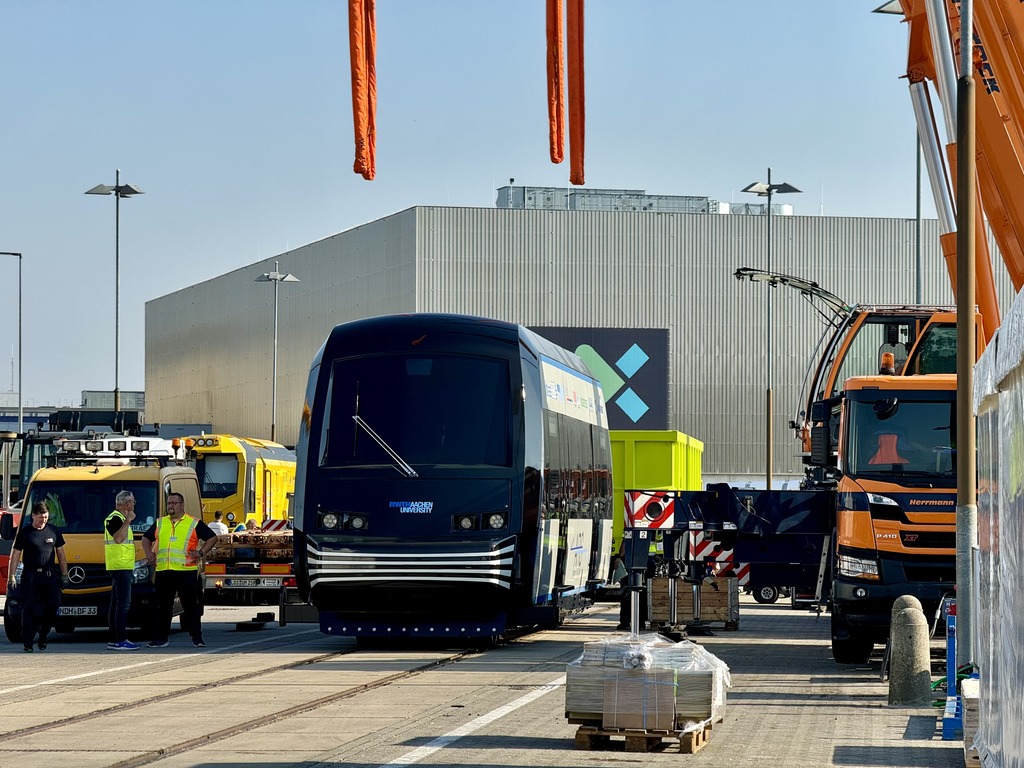Interested in staying up to date? Sign up for the newsletter.
Information on the Aachen Rail Shuttle (ARS) and the experimental vehicle, which was developed and built as part of the BMWK-funded project “Flexibler Schienenbus für den ländlichen Raum – FlexSbus-LR”.
Motivation:
In rural areas, local rail passenger transport is only poorly developed, if it exists at all. One of the reasons for this is that numerous unprofitable rail lines were shut down in the second half of the last century up until the 2010s. Low demand in sparsely populated regions meant that it was not even remotely economically viable to provide regional rail transport. Where there is rail transport in these regions, trains usually only run once an hour with vehicles that have significantly greater passenger capacity than necessary. The poor service makes it unattractive for people living in rural areas. Low demand and infrequent journeys are therefore interdependent.
The aim behind the Aachen Rail Shuttle (ARS) concept is therefore to offer suitable small vehicles that are significantly cheaper to purchase and to operate, thus enabling more frequent services on existing routes and routes that are to be reactivated, even in sparsely populated areas. Furthermore, retrofitting an overhead line is typically not economically viable in rural areas, which is why in the past, rail services in these areas were almost entirely operated with diesel vehicles. In order to nonetheless enable purely electric, locally emission-free travel, this vehicle is equipped with a battery-electric drive. This requires less maintenance in comparison and reduces running costs. Another important factor for lower operating costs is the aim of operating the vehicle driverless.
The vehicle should only travel at a speed (max. 100 km/h) that allows it to come to a safe stop in front of an obstacle. The braking distance, which is significantly longer for rail vehicles than for road vehicles, must always be shorter than the prediction of the obstacle detection sensors.
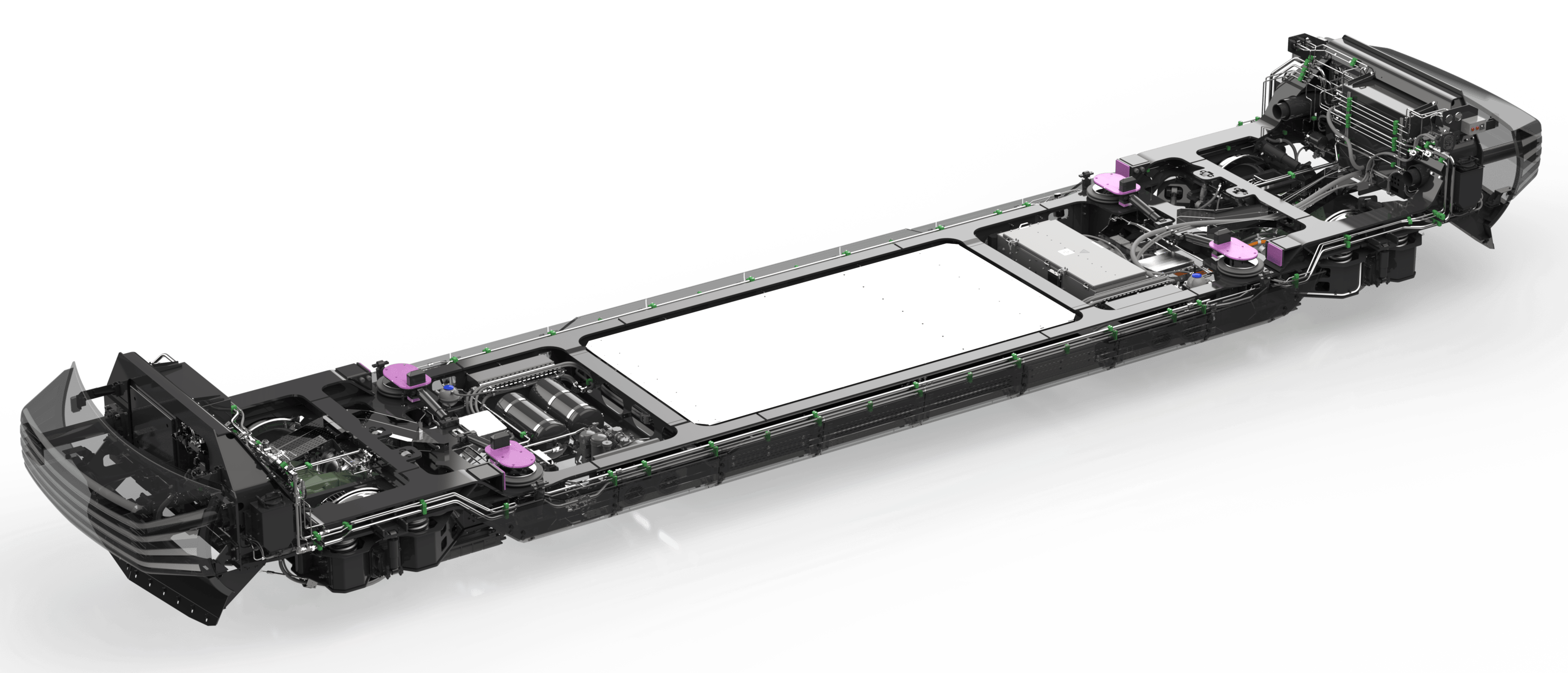
The vehicle
In the “Flexibler Schienenbus für den ländlichen Raum - FlexSbus-LR” project funded by the Federal Ministry for Economic Affairs and Climate Protection (BMWK), a consortium of representatives from the industry and two institutes of RWTH Aachen University, also responsible for overall project coordination, developed an experimental vehicle that builds on this idea and comes very close to implementing the vision of the Aachen Rail Shuttle.
The rail bus on display is 13.5 m long, has two powered, self-steering single wheel sets and offers space for up to 76 people. Another special feature of the vehicle is that the chassis and passenger cabin are two separate units and the passenger cabin can be removed from the chassis as a whole.
The chassis is designed as a modular ladder frame, which carries almost all of the technical equipment and would therefore theoretically be able to drive without a passenger cell. The central element is the traction battery with LTO cell chemistry, which, with a capacity of 152 kWh, enables a range of up to 220 km even on topographically demanding routes. Technical components for controlling the pneumatic braking system and the electrical supply of consumers at different voltage levels are housed in removable and freely configurable component carriers. The running gear is located underneath the chassis. Both wheel sets are driven by one electric motor each, which is derived from motor sports and has a continuous power output of 160 kW (290 kW peak). Braking is primarily recuperative. However, the electro-dynamic brake can be supported by the pneumatic brake if required. During emergency braking, the low-mounted magnetic rail brake ensures fast response times and increased deceleration. In the event of a collision, the vehicle has crash absorbers with anti-climb protection and therefore meets the requirements for passive safety in accordance with EN 15227, category C-III.
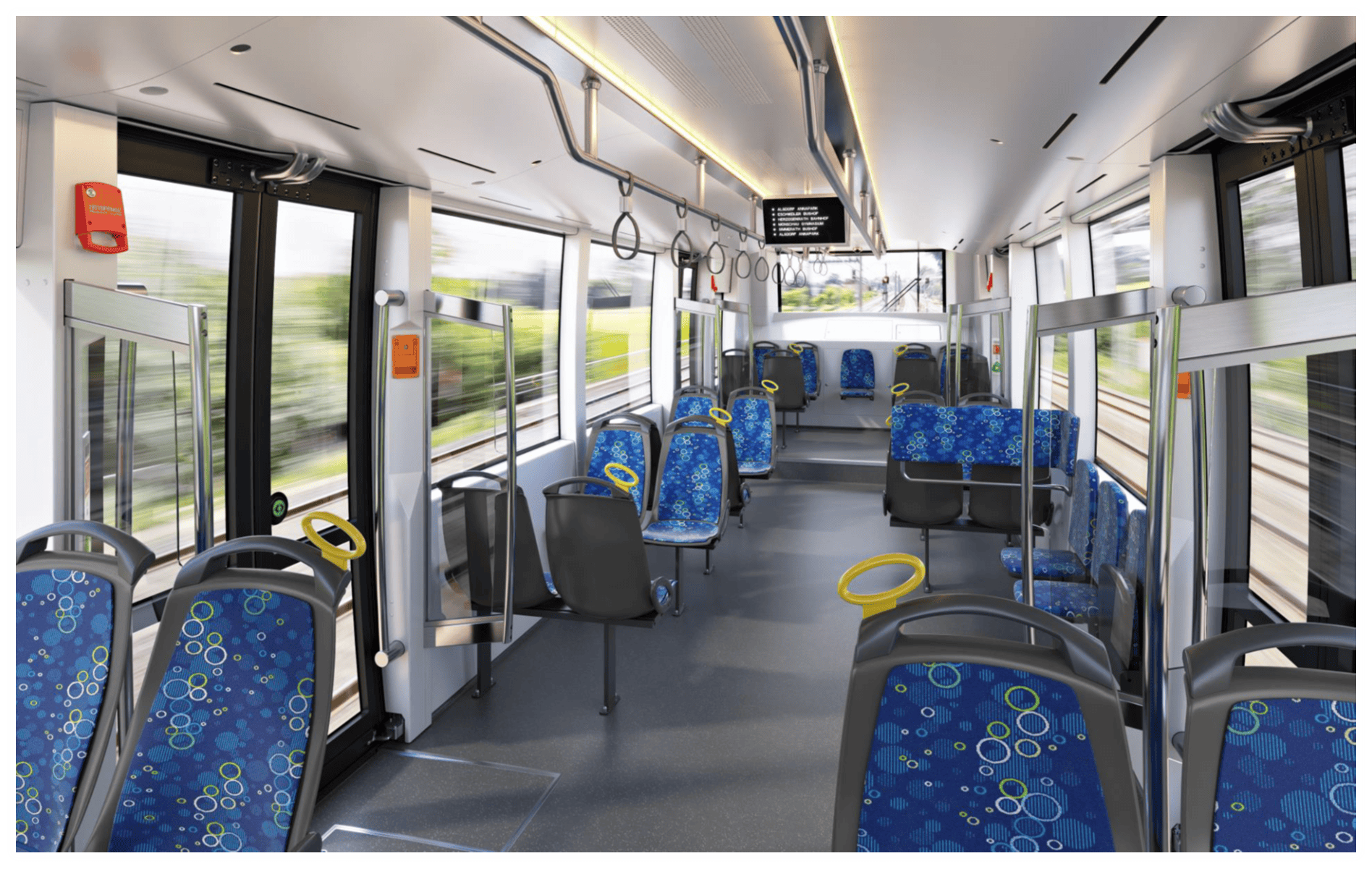
The separation of the chassis and passenger cell also makes it feasible to use the ARS as a cargo version. During the design phase, conscious attention was paid to reducing the time required to swap the passenger cabin as much as possible. This means that the ARS could also be used in alternating operation - passenger transport during the day and freight transport at night. For this reason, all the pneumatics that supply the braking system, the sanding and the macrophones are located exclusively in the chassis. As the cooling and heating circuits in the chassis and passenger cell also run independently of each other, only the mechanical connection remains in addition to the electrical interface. The latter does not require a roll support, so that a form-fitting connection only exists at the four air springs, which can be decoupled using a lever mechanism.
Additional advantages to this design are that, on the one hand, maintenance and servicing are considerably cheaper due to the easy accessibility. On the other hand, trains have a life expectancy of well over 30 years in some cases. However, in order to achieve this, the trains are usually redesigned after around 15 years. This mainly involves a general overhaul of the interior. By separating the chassis and passenger cell, the ARS allows the mobile undercarriage to be retained and a new passenger cell can simply be fitted when the interior is worn out.
For RWTH Aachen University as a research institution, the easy accessibility and the simple exchangeability of technical components in the chassis associated with the modular design also offers the opportunity to use this experimental vehicle for further developments and, for example, to test different components for the drive, brakes and sensors, to replace existing components with lighter ones and, above all, to drive forward research in the field of driverless operation in rail transport.
Summary:
The vehicle shown here is a balance between conformity to standards and innovation. During development, the basic and safety-relevant standards were taken into account in order to ensure that approval is not too far off. At the same time, innovative solutions and components from the automotive industry were integrated, which enable cost-effective and reliable operation even on less frequented routes in rural areas and are intended to shift decision-making in terms of cost-benefit comparisons in favor of reactivating decommissioned railroad lines in the case of reactivation projects.

